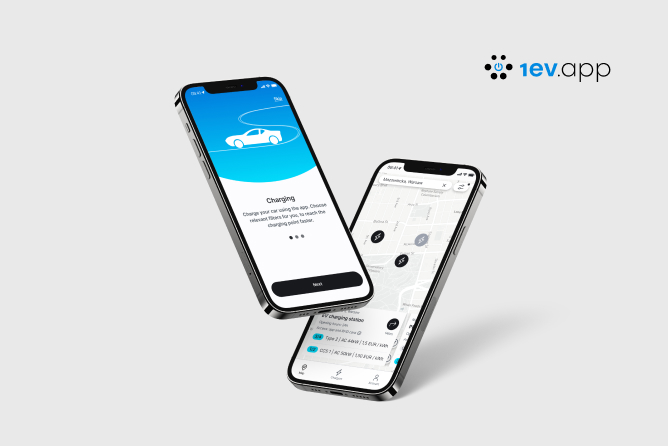Outsourcing in the IT industry in 2023 has already become a common practice. Plenty of software houses worldwide offer to outsource, and their scope of services has become very wide. Across many locations, Poland tops the list of countries offering IT outsourcing services as "one of the top 5 countries for IT outsourcing", according to Daxx.com.
Why are clients so enthusiastic about using these solutions? Because it brings many advantages to their business. If you, too, are considering choosing IT Outsourcing, it is worth getting acquainted with all its types and benefits - that is what you will learn in this article.
However, let's start with the basics.
What is IT outsourcing?
IT outsourcing is simply the practice to use providers outside of your business to complete a given project. So, for example, you can outsource complex application building, software development, or any tasks related to IT overall. It’s often the best choice to take advantage of experts in their field who can handle the process of creating and bringing a product to market. In addition to that, outsourcing can be easier than hiring in-house specialists. The key is to find the right partner to work with.
Different types of IT outsourcing
There are different types of IT outsourcing, which can be divided by the place of assignment, the location where tasks are performed, and the scope of responsibilities.
The main three types of outsourcing covering issues such as team extension, team augmentation, and IT-managed services are:
1. Offshoring
Offshoring, also known as offshore outsourcing, is the outsourcing of IT services to a country far away from our location. It allows us to get favorable pricing terms, due to better economic conditions, lower labor costs in the country, and greater availability of industry experts. This is why offshoring is often considered the most cost-effective type of outsourcing. Long distance is also associated with time differences - however, other time zones are not necessarily an obstacle and many companies do not regard this as an insurmountable barrier.
2. Nearshoring
Nearshoring is the outsourcing of IT tasks to closer locations, in the same or closer time zone to us. Thanks to this, communication with our business partner runs smoothly, and cultural differences are not as strongly felt. An example of nearshoring could be a company from Germany that outsources a project to a Polish software development team.
3. Onshoring
Onshoring, or homeshoring, is the hiring of a software development team within one's own country, often from a close location - a city or neighborhood. For example, a company in Poland in the city of Krakow uses the onshoring services of a software company in Katowice. Such a solution makes it easier to find specialists who do quality work when they are hard to find at short notice in our location. This allows for better control of outsourced tasks, and the services provided are performed at a good level at a reasonable price.
For more on the differences between offshoring and nearshoring, see our previous article "Offshoring and nearshoring - what to choose?" - Read it here!
IT Outsourcing - benefits!
Regardless of the type of IT outsourcing, this service offers many benefits to your business. First of all, it translates into speeding up the processes of bringing products to market and often reduces the cost of software implementation. But that's not all! Learn more about the benefits of IT outsourcing:
1. Scalability
When the goals and needs in a project change, the development team can change along with them thanks to IT outsourcing. Instead of recruiting new people during the course of a given project, which is often a tedious and difficult process, you can hire external programmers and adjust their numbers as needed.
2. Time-saving
With IT outsourcing, save the time you would have spent on a lengthy in-house recruitment process. By hiring outside experts, you can focus on other important aspects of your business while developers take care of the next tasks in the project. No weeks of training, lengthy paperwork, and implementation.
3. Cost-saving
Outsourcing IT is often a more cost-effective solution than hiring an in-house team, especially when offshoring. This is often due to lower labor costs in the country to which you outsource the project. When recruiting costs are gone, you only pay for the time spent on tasks.
4. Access to IT experts
It may be that there are not so many experienced specialists in your location that can be entrusted with the development of the digital product. IT outsourcing is a good solution because it means you don't have to limit yourself when it comes to the extent of your search for real specialists. They may be hundreds of kilometers away from you, but they will take care of your problem like a pro!
5. Quality development
When you outsource a project to a company with an extensive portfolio and expertise, you can get a quality solution. When you choose your outsourced team wisely, a digital product can be created with the latest technology tools to suit all needs. When outsourcing IT projects, you can specify your exact requirements - the needs of the project, keeping track of the progress as you go along, and who exactly will be on your team.
So is it worth it?
In summary, there are many types of IT outsourcing. Be sure to use the option that best suits your business and project requirements. Choose your software development partner prudently, and you'll get plenty of benefits in addition to support. Take advantage of IT outsourcing and increase your chances over your competitors in the market!
.jpg)




.webp)

.jpg)


.jpg)

.jpg)


.jpg)
.jpg)

.jpg)
.jpg)

.jpg)

.jpg)
.jpg)
.jpg)

.jpg)
.webp)

.webp)


.jpg)









.webp)


.webp)






























.webp)





.webp)





.webp)



.webp)













